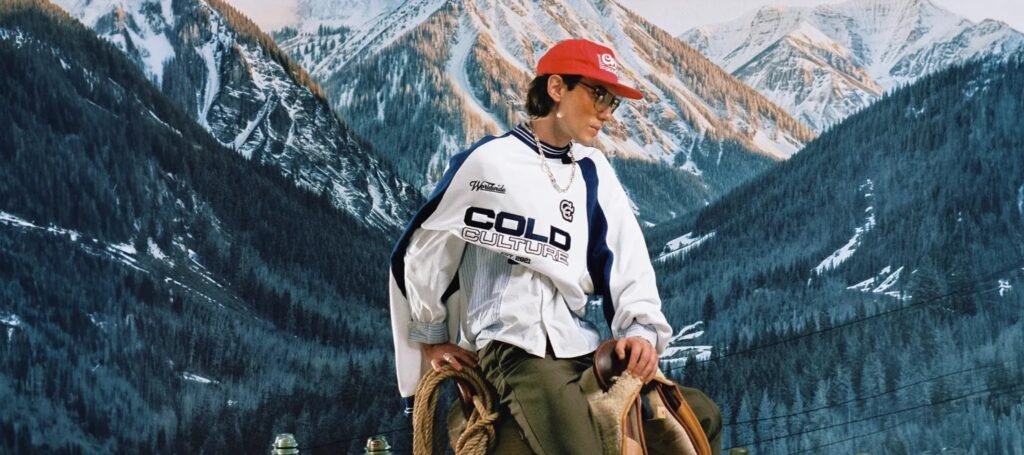Are you wondering if style and sustainability can really go hand in hand? Enter cold culture clothing—a fashion movement that’s carving out a niche where environmental consciousness and practical style meet. Designed for colder climates, this trend isn’t just about staying warm; it’s about making thoughtful, sustainable choices while looking effortlessly chic.
In this blog, we’ll uncover the essence of cold culture clothing, its impact on sustainable fashion, and how you can incorporate it into your wardrobe. Whether you’re a devoted follower of sustainable living or a newcomer curious about eco-friendly fashion, there’s something here for you.
What is Cold Culture Clothing?
Cold culture clothing refers to apparel tailored specifically for colder environments with an emphasis on thoughtful design, durability, and functional beauty. This niche of fashion celebrates a blend of practicality and style, using high-performing fabrics and layers that combat extreme climates while keeping aesthetics in mind.
Beyond functionality, cold culture clothing has gripped the attention of the fashion industry for another reason—its sustainability. Unlike fast fashion, which churns out clothing with environmental costs in mind, cold culture brands tend to focus on eco-friendly practices such as ethical sourcing and long-lasting designs.
The rise of cold culture fashion represents a shift toward mindful choices, where apparel isn’t simply a statement but also a way to connect with the planet.
Why Sustainable Fashion Matters
Before we jump into the nitty-gritty of cold culture clothing, it’s essential to understand why sustainable fashion matters.
The traditional fashion industry is one of the largest polluters in the world, contributing to water waste, excessive energy use, and millions of tons of textile waste annually. Polyester-based clothing not only consumes a significant amount of non-renewable resources but also sheds microplastics into our oceans during every wash.
Cold culture clothing offers a solution by emphasizing materials that are eco-conscious and designed to last. Think organic cotton, recycled polyester, and even innovative bio-based fabrics. Consuming fewer, higher-quality pieces reduces the need for constant replacements—a win for your closet and the environment.
Trends in Cold Culture Clothing
Cold culture fashion offers a growing array of styles and innovations, proving that sustainability never has to forego style.
Natural and Recycled Fabrics
Expect to find garments made from natural wool, organic cotton, and even recycled fibers. Brands are now offering jackets filled with plant-based insulation instead of traditional down.
Functional Layering
Cold culture fashion thrives on layers that serve both form and function. Neutral-toned base layers built for warmth, stylish mid-layers, and sleek outerwear provide endless styling possibilities.
Contemporary Minimalism
Simple, clean lines paired with neutral palettes are defining the cold culture aesthetic. These timeless styles encourage wearing pieces through seasons, ensuring a minimalist yet impactful wardrobe.
Cold Culture Influencers to Watch
Every movement has trailblazers, and cold culture fashion is no exception. Here’s who’s setting the standard for sustainability in chilly climates.
- Patagonia: A long-time leader in outdoor gear, Patagonia combines sustainable practices with outdoor-ready fashion. Their jackets made from recycled materials are staples of cold culture wardrobes.
- The North Circular: This brand specializes in handmade knitwear crafted from British wool, emphasizing slow fashion and zero waste.
- Allbirds: Known for their eco-friendly footwear, Allbirds’ winter wool sneakers and base layers are redefining functional cold-weather fashion.
These influencers don’t just create garments—they embody a movement. Following their lead is like joining an inspiring, sustainable community.
How to Incorporate Cold Culture Clothing into Your Wardrobe
If you’re ready to align your closet with both practicality and sustainability, here’s a simple guide to start exploring cold culture clothing.
1. Audit Your Wardrobe
Before you shop, assess what you currently own. Identify functional pieces like wool sweaters or durable jackets that can already serve as staples.
2. Invest in Essentials
Focus on key pieces that you’ll use frequently, such as insulated outerwear, moisture-wicking base layers, and versatile scarves or gloves.
3. Shop Secondhand
Thrift stores and online marketplaces often carry cold culture essentials. This is a budget-friendly and environmentally responsible way to build your wardrobe.
4. Prioritize Durability
When buying new, aim for high-quality items with timeless designs. Avoid overly trendy pieces that may not make sense two seasons down the line.
5. Choose Neutral Color Palettes
A cohesive wardrobe starts with versatile colors. Opt for earthy tones, blacks, and whites to easily layer and mix-and-match.
The Road Ahead for Cold Culture Clothing
What’s the future of cold culture fashion? It’s looking bright—and eco-friendly.
With advancements in sustainable textiles and rising consumer demand for ethical fashion, cold culture clothing continues to carve out a substantial niche in the industry. Brands are innovating with materials like algae fibers and mushroom leather, pushing the boundaries of environmentally-conscious fashion.
Experts also predict increased adoption of circular fashion, where brands encourage recycling or repairing garments instead of discarding them. Cold culture clothing is poised to become more than just a trend—it’s shaping up to be the foundation of future winter wardrobes.
Start Your Journey Towards Sustainability
Cold culture clothing offers an incredible opportunity to merge style, functionality, and sustainability. By making mindful choices in what we wear, we can cherish our planet while looking effortlessly chic during the colder months.
Why not take your first step into the world of sustainable fashion today? Explore brands that align with your values or repurpose your favorite winter staples for a fresh look. Every small change counts—and it starts with you.
